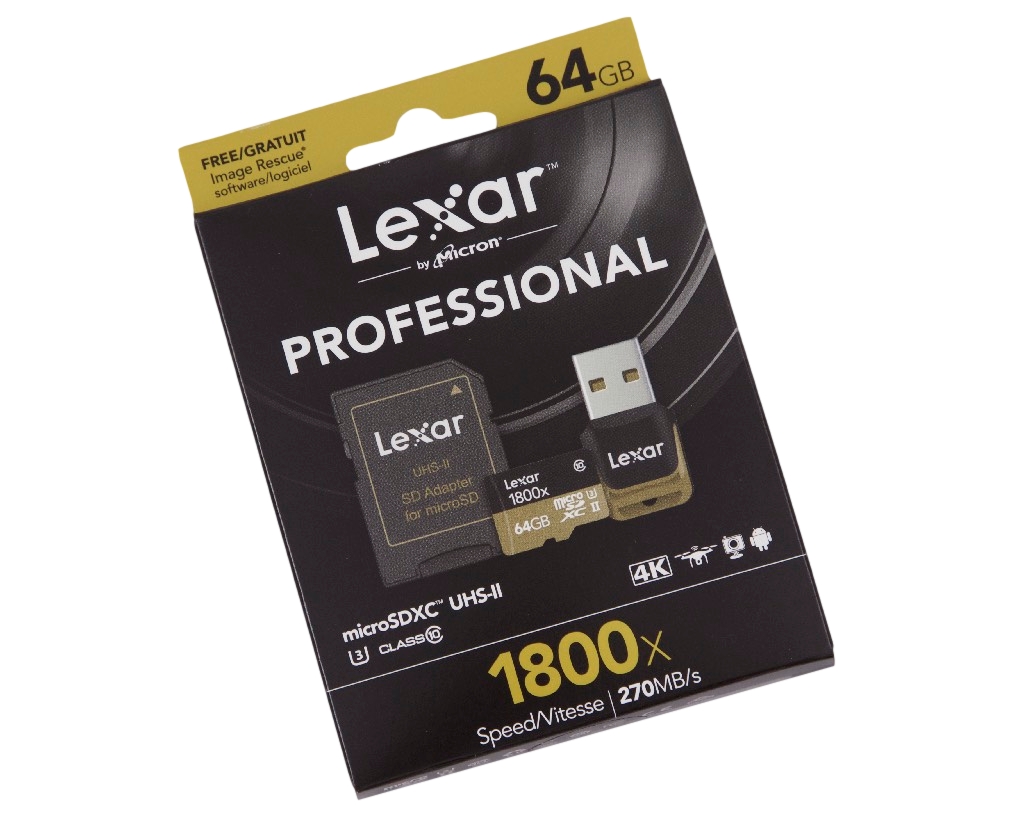Another product that we were introduced to at this year’s Consumer Electronics Show was the Lexar Professional UHS-II Class 10 U3 microSDXC card. This microSDXC card was designed with the sole purpose of replacing any microSD card you are currently using in any tablet, smartphone, drone, or action camera.
WHAT IS SDXC? – SD CARD PERFORMANCE
First, there are a few acronyms and short forms that some may not know, some of you may, so let’s run through it quickly to keep everyone on the same page.
What does SDXC mean? When considering the size necessary for your photography or videography, your storage device will be your ultimate determinant. Obviously a flash card with a lower capacity will hold less videos and photos, which is pretty straight forward. If you have an SD (Secure Digital) card, you are probably going to want to upgrade that shortly, as that is an older technology that accompanied the first digital photography and videography devices. With it you will find not only lower capacities, but slower transfer speeds. To go the next step up to a more prevalent storage option, especially for photography enthusiasts and weekend photo shoots, is SDHC (Secure Digital High Capacity). SDHC cards can allow for capacities of up to 32GB, and transfer speeds of up to 42 MB/s. If you are looking to shoot video in a higher resolution, then you will find yourself looking one step further with SDXC (Secure Digital Xtended Capacity). SDXC can allow for capacities greater than 32GB, and have a maximum write speed of up to 95 MB/s.
If you are interested more in videography, than the next acronym is your key point to look for, especially if you are worried about transfer speeds. If you have a flash card handy, take a look at it, you may notice that there is a number that has a circle around it. This is your class rating, which denotes the guaranteed minimum write speed. To give you an example if you have a ‘4’ within your circle, your flash card is guaranteed to write at a minimum of 4 MB/s. When you start to get up to higher minimum write speeds, you will notice that the number will not increase past ’10’, instead the denotation changes to UHS-1, or a U with a ‘1’ or a ‘3’ within it. ‘Ultra High Speed 1’ would guarantee minimum write speeds of 10 MB/s and UHS-1 Speed Class 3 would denote minimum speeds of 30 MB/s. If your DSLR or video camera is not capable of UHS-1, than the flash card will revert back to Class 10 performance.
Back to the Lexar microSDXC card, it is available in three capacities of 32, 64 and 128GB, and has a listed price of $82.99, $136.99 and $273.99 accordingly. It’s important to note that the 32GB is only SDHC.
When it comes to speed, Lexar lists the micro SD cards to reach up to 270 MB/s read and 245 MB/s write.
If your computer is not equipped with the latest USB technology, then we encourage you to have a look at our report of the HighPoint 4-Port HBA. This PCIe expansion card easily allows you to add four additional USB ports to your system, as well as the addition of USB 3.0 technology.
 The SSD Review The Worlds Dedicated SSD Education and Review Resource |
The SSD Review The Worlds Dedicated SSD Education and Review Resource | 


most cameras and other dont have UHS-II support. it requires extra interface, so the card is limited to UHS-I in moost appication and this is limited to about 100mb/s .You should rather test this cared against other in high end camera not in windows stupid tools
Woah, those are some pretty expensive cards.
I wish manufacturers would make cards, tuned for random performance. With lots of single board computers floating around without any nand storage, cards like this would be great.
Instead of crazy 100MB/s+ sequential speed, tune the card for low QD at the expense of sequential performance. i’m sure it can be done.